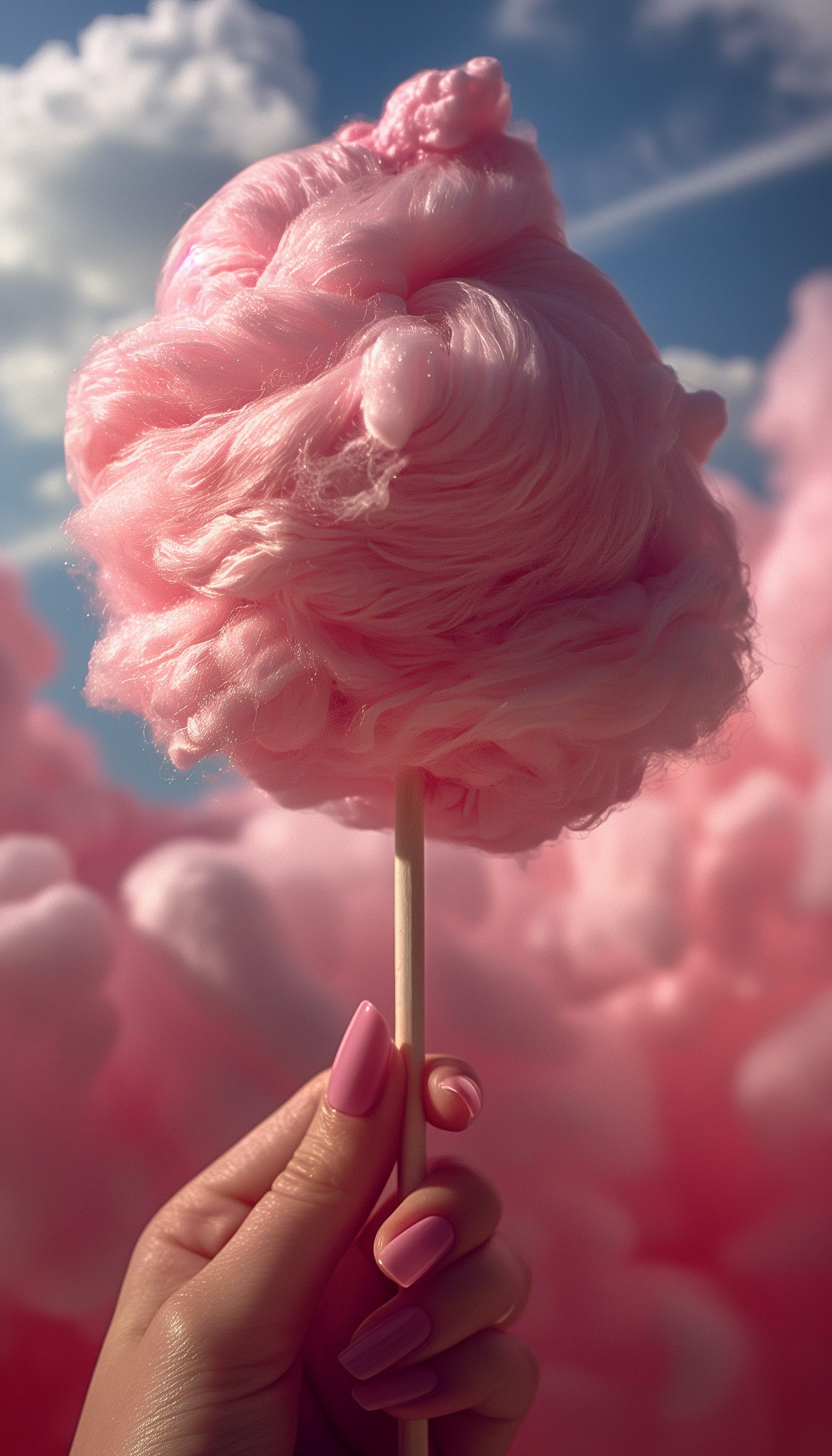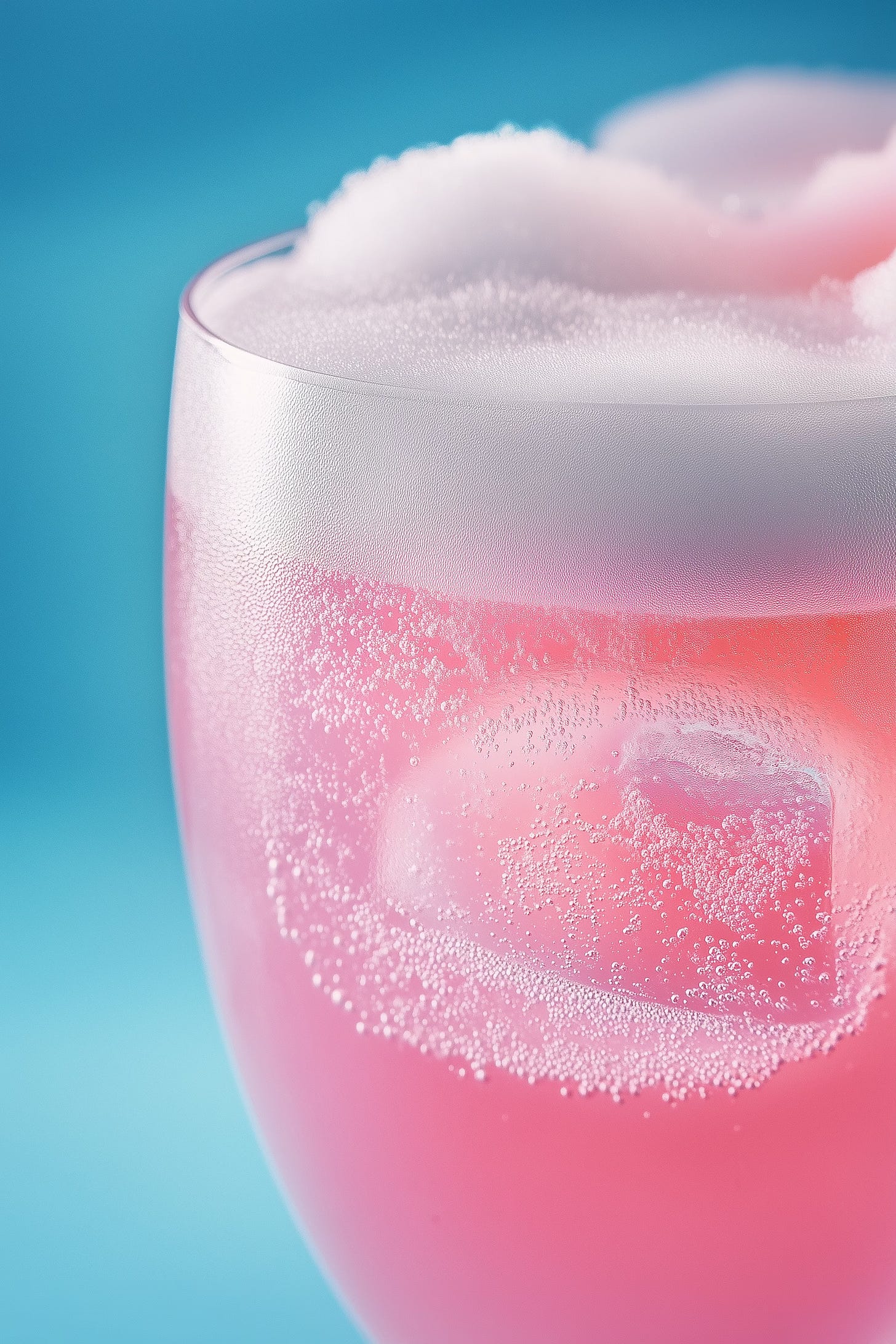National Cotton Candy Day: Sweet Treats, Scientific Wonders, and Bubbly Delights
December 7th is National Cotton Candy Day, a celebration of one of the most magical and nostalgic treats ever invented. Known for its airy texture, vibrant colors, and melt-in-your-mouth sweetness, cotton candy has delighted children and adults alike for generations. But beyond its whimsical charm, this iconic treat holds a fascinating history, surprising benefits, and even a role in cutting-edge scientific advancements. Today, we’ll explore its origins, its unexpected contributions to technology, and how you can use it to create a show-stopping cotton candy mocktail.
5 Benefits of Cotton Candy
Simple Joy
Cotton candy brings instant happiness. Its playful appearance and sugary simplicity evoke a sense of carefree fun and nostalgia for fairs and carnivals.A Guilt-Free Treat
Surprisingly, cotton candy is relatively low in calories compared to other desserts. A standard serving contains around 100 calories, making it a light indulgence when enjoyed in moderation.Customizable and Versatile
Cotton candy comes in a rainbow of colors and flavors, from classic pink vanilla to bold options like watermelon and bubblegum, offering something for every taste.Entertaining and Interactive
Watching cotton candy being spun is mesmerizing and adds an extra layer of enjoyment to the experience, turning a treat into an event.Perfect for Celebrations
With its vibrant hues and fluffy texture, cotton candy is a staple at fairs, parties, and festivals, making it the ultimate festive dessert.
The Origin of Cotton Candy Day
The exact origins of National Cotton Candy Day remain unclear, but the holiday likely stems from a collective love for this iconic treat. Observed annually on December 7th, the day celebrates the joy cotton candy brings, encouraging people to indulge in its sweet simplicity.
The History of Cotton Candy
Cotton candy as we know it was invented in 1897 by dentist William Morrison and confectioner John C. Wharton. Using a machine that melted sugar and spun it into delicate threads, they introduced the treat as "fairy floss" at the 1904 World’s Fair in St. Louis. It was a massive hit, selling over 68,000 boxes at 25 cents each.
Globally, cotton candy has unique names and variations:
In France: Barbe à papa (Papa’s beard).
In India: Buddhi ka baal (Elder’s hair).
In Japan: Cotton candy often features intricate designs and gourmet flavors, elevating it to an art form.
Cotton Candy and Microfiber Technology
It may be surprising, but the structure of cotton candy has inspired advancements in microfiber and nanofiber technology. The process of spinning sugar into fine threads mirrors how scientists create nanofibers—ultra-thin, lightweight materials that have revolutionary applications.
How Cotton Candy Inspired Nanofiber Technology
Scientists have repurposed cotton candy machines to develop nanofibers. Instead of sugar, synthetic polymers are spun into web-like structures, replicating the intricate design of cotton candy. These fibers are thinner than human hair and incredibly versatile.
Applications of Nanofibers
Tissue Engineering: Nanofibers are used to create scaffolds that mimic human tissue, providing a framework for cells to grow and regenerate, aiding in organ repair and medical advancements.
Water and Air Filtration: High-efficiency nanofiber filters trap contaminants, providing clean drinking water and purifying air from pollutants and viruses.
Controlled Drug Delivery: Researchers use nanofibers to coat medications, enabling precise and slow drug release for chronic conditions.
Space Exploration: Nanofibers’ lightweight yet durable properties make them ideal for thermal insulation, flexible astronaut suits, and spacecraft interiors.
This unexpected crossover between carnival treats and scientific innovation highlights how everyday ideas can lead to groundbreaking solutions.
How to Make Cotton Candy
Creating cotton candy requires a specialized machine. Here’s how it works:
Heat and Melt Sugar: Granulated sugar is heated until it liquefies.
Spin the Sugar: Centrifugal force pushes the liquid sugar through tiny holes, forming fine threads.
Cool and Solidify: As the sugar cools, it solidifies into the delicate threads we recognize as cotton candy.
Collect the Cotton Candy: Threads are gathered with a cone or stick, creating a fluffy, colorful cloud.
Home-use cotton candy machines make it easy to recreate this process and experiment with flavors and colors.
Recipe: Cotton Candy Mocktail
This festive mocktail is a perfect way to incorporate cotton candy into your celebrations.
Ingredients
1 cup sparkling water or lemon-lime soda
1 tablespoon flavored syrup (e.g., raspberry, strawberry, or vanilla)
A small tuft of cotton candy (choose a complementary flavor)
Ice cubes
Instructions
Fill a glass with ice cubes.
Add flavored syrup to the glass.
Pour sparkling water or soda over the syrup to create a fizzy base.
Just before serving, place a small tuft of cotton candy on the rim or over the glass.
Serve immediately and watch as the cotton candy dissolves for a magical effect.
Celebrate National Cotton Candy Day
This National Cotton Candy Day, enjoy the whimsical charm of this sugary treat while appreciating its fascinating history and scientific legacy. Whether you’re indulging in cotton candy at a fair, learning about its role in nanotechnology, or crafting a bubbly cotton candy mocktail, this iconic dessert reminds us of the joy in simple pleasures.
Raise your glass—or your fluffy cloud—and toast to the sweet, magical wonder of cotton candy! 🍭✨









